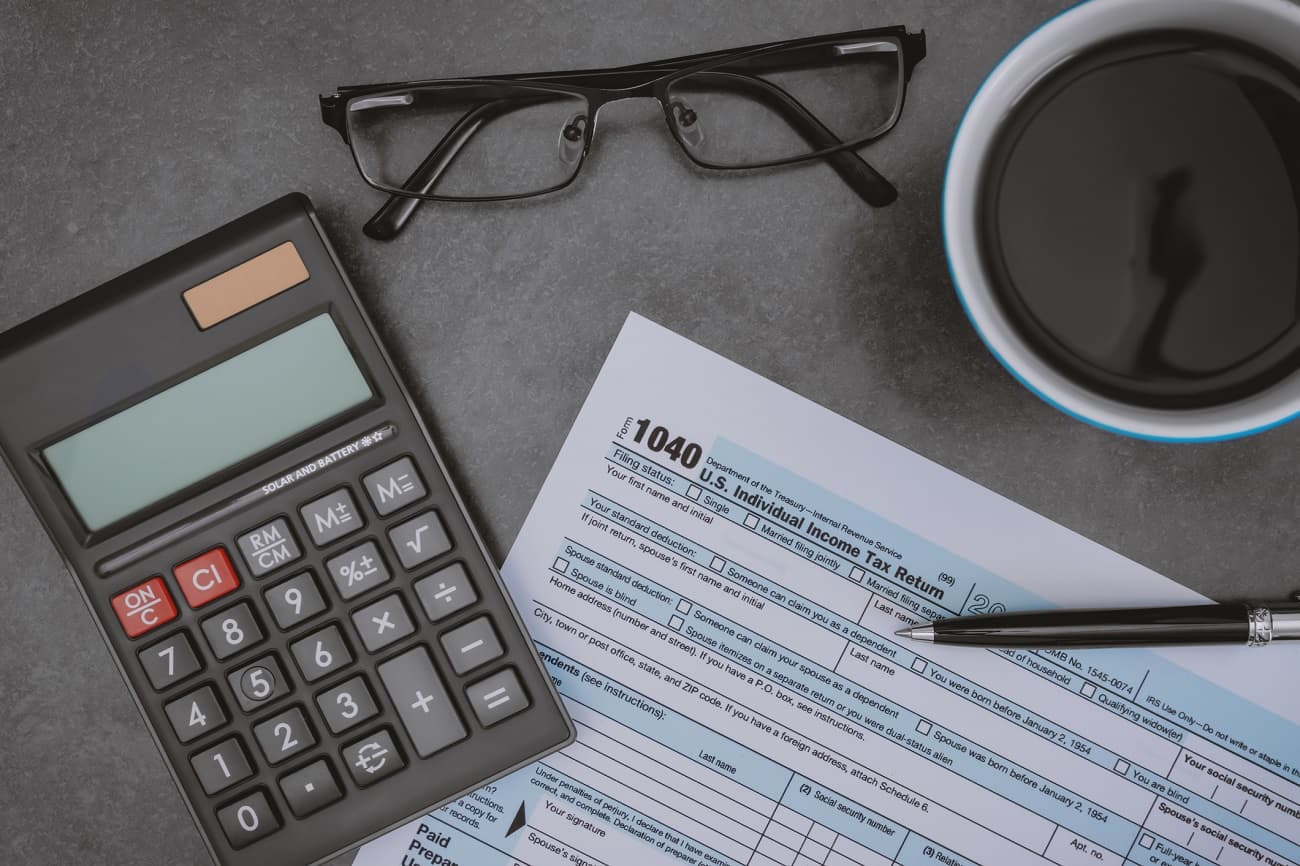Last Updated: 09/18/2025
Homeowners who itemize their deductions can claim a deduction for real property taxes paid on their home. Combined with the deduction for mortgage interest, which is also available only for those who can itemize, the property tax deduction can significantly reduce the cost of buying and owning a home.
According to the IRS, 2021 was just under $6,300, an amount that is down from the average amount deducted in 2018, which was just over $6,800.
What is the property tax deduction?
Government entities in all 50 states (and the District of Columbia) levy a tax on real property. This kind of tax is mostly imposed by local taxing jurisdictions, such as counties, municipalities, townships, or school or other special districts. The tax almost always equals a percentage of the taxable value of the property.
Since the inception of the modern Internal Revenue Code in 1913, our federal tax law has allowed a deduction for property taxes paid.
However, for the first time, the Tax Cuts and Jobs Act of 2017 limited the deduction of all state and local taxes (SALT) to $10,000 per year for tax years 2018 through 2025. This includes property taxes as well as state or local income taxes or sales taxes.
Fast forward to July 4, 2025, when President Trump signed the One Big Beautiful Bill Act into law. This very large tax bill included a change to the deduction limit for SALT payments. For tax years 2025 through 2029, the $10,000 deduction limit has been increased to $40,000. For tax years after 2029, the $10,000 limit will return. Also, for taxpayers with modified adjusted income above certain thresholds ($500,000 in 2025), the maximum deduction is reduced, but not below $10,000.
How has the increased standard deduction affected the deductibility of property taxes?
The modern income tax has always allowed certain deductions including state and local taxes and certain interest paid, with the limits listed above. However, in order to reduce the burden of record-keeping on taxpayers, Congress in 1944 created the standard deduction.
The standard deduction grants every taxpayer a certain assumed amount of deductions that are available to reduce their taxable income, even if the taxpayer did not incur the deduction. The effect of the standard deduction is that only if a tax filer’s actual amount of deductions is higher than the standard deduction would he or she itemize. If the actual amount of deductions is lower than the standard amount, taxpayers are better off claiming the higher standard amount.
The Tax Cuts and Jobs Act nearly doubled the amount of the standard deduction, which greatly decreased the number of tax filers whose actual deductions exceeded the standard amount. In fact, the portion of tax filers who itemized dropped from about one in three in 2017 to about one in ten in 2018, which is the first year in which the higher standard deduction was in effect. For tax year 2023, only about 9 percent itemized.
In relation to the property tax deduction, the proportion of filers who claimed the deduction sank from 26 percent in 2017 to just 10 percent in the years since 2018.
The result of the huge increase in the standard deduction is that most tax filers effectively enjoy the benefit of the property tax deduction even if they paid little or no actual property tax. This has resulted in the tax incentive effect of the itemized deduction being lost for all but the 10 percent or so who itemize their deductions. For the remainder, the incentive has disappeared because they receive the same tax deduction whether they rent a home or own one.
How has the SALT deduction limit affected the property tax deduction?
The $10,000 cap on the deduction for state and local taxes paid has had a double impact on those who are subject to it. First, the limit has made it more difficult for a tax filer’s total itemized deductions to exceed the standard deduction. If the total deductions remain below the higher standard amount, there is no specific tax incentive for paying the property tax as those who claim the standard get more tax benefit, even if they paid no actual property tax.
Second, the $10,000 limit can reduce the actual amount of the tax deduction, even for those who can itemize. The higher the actual tax paid, the more the limit pinches.
Obviously, the new higher SALT deduction limit will ease the pinch and result in itemizers who pay more than $10,000 in state and local taxes to get a larger tax benefit from it than was possible between tax years 2018 and 2024.
How to claim a property tax deduction
In order to claim the property tax deduction, tax filers must go through the following steps:
1. Determine if you can itemize your deductions
As indicated above, only if you have total itemized deductions (including state and local taxes, charitable contributions, and deductible interest expense) exceeding the standard deduction amount does it benefit you to itemize. If your actual amounts are less than the standard deduction, you will be better off claiming the standard deduction.
For tax year 2025, here are the standard deduction amounts:
| Filing status | Standard deduction |
| Single | $15,750 |
| Married, filing jointly | $31,500 |
| Married, filing separately | $15,750 |
| Head of household | $23,625 |
| Qualifying Widow(er) | $31,500 |
2. Use Schedule A to itemize deductions
Once you determine that you do have total deductions exceeding the standard amount, use Schedule A to report the deductions.
3. Calculate your tax bill based on your deductions
Itemized deductions (or the standard deduction, whichever is higher) is subtracted from your adjusted gross income (AGI) to determine your taxable income. Thus, the amount of your deductions will reduce the amount of tax you owe. At the margin, every dollar of deduction will lower your taxes by the tax bracket for your taxable income level. So, for example, if you are in the 24 percent tax bracket, you will save $24 in tax for every $100 you have in itemized deductions or the standard deduction.
4. File your tax return
Once your tax return is completed and signed, you can submit it.
What other tax deductions are available for new homeowners?
Homeowners also may be eligible to deduct mortgage interest paid on their loan. However, there are limits that govern this deduction.
And, in certain cases, mortgage insurance premiums can also be deductible. As with the property tax deduction, these are itemized deductions and will be beneficial only if the total amount of such deductions is greater than the standard deduction.










